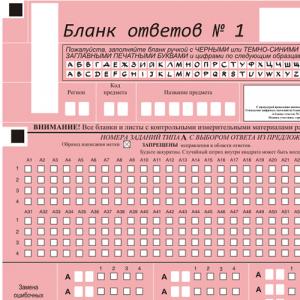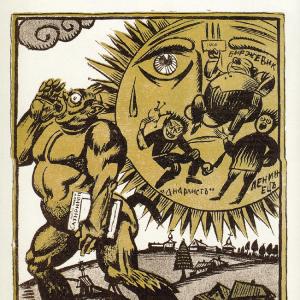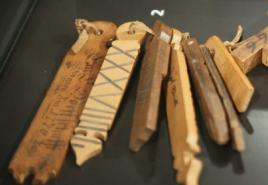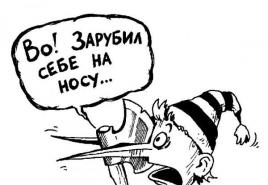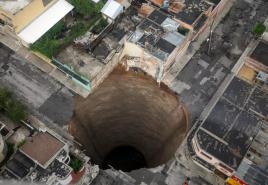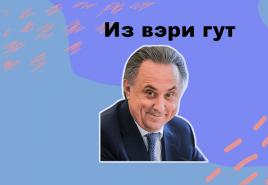Nikolay Ivanovich Lavrov. Tsarist general Vasily Lavrov: why is he remembered in Bulgaria? "Yours on earth and beyond the grave..."
Vasily Mikhailovich Lavrov - (December 28, 1841, Pskov province of the Russian Empire - October 10, 1903, St. Petersburg, Russian Empire) - Rear Admiral, Lieutenant General, Chairman of the Board of the Baltic Shipyard.
Business card autographed by the future Rear Admiral
From nobles. Born December 28, 1841 in his family estate in the Pskov province. Brought up in Marine cadet corps, where he was admitted in 1855 by a boarder named after Admiral Nakhimov.
V.M. Lavrov, still captain 2nd rank, surrounded by family and friends, filmed in Japan
In 1861 he was promoted to midshipmen of the fleet, with enrollment in the 3rd naval crew. In 1861-1862 he circumnavigated the world on the corvette Bogatyr under the command of Captain 2nd Rank Chebyshev, in the squadron of Admiral Popov and in 1863 on the corvette Rynda under the command of Lieutenant Basargin. In the same year he received the first officer rank of midshipman.
Comrade Lavrov, sitting next to him in the previous Japanese photo. Already in the rank of general. Full name unknown
In 1865 he was transferred to the Siberian Flotilla and went to the place of service on the schooner Aleut. He served in the Siberian flotilla until 1890. He was one of the main figures in the organization of Vladivostok, laying the foundation for its future economic well-being, and took an active and direct part in the construction of the Vladivostok port. At the same time, he took part in affairs with the enemy during the expulsion of the Khunhuzes from the South Ussuri Territory on the schooner Aleut.
Ivan Mikhailovich Lavrov, Vice Admiral, brother of the owner of the archive, commandant of Kronstadt.
AT last years During his service in the Siberian waters, he held the posts of captain over the port of Vladivostok and assistant commander of the same port. At the same time, he made many voyages in the Sea of Japan and China, as well as in the South Harbors and ports of the Eastern Ocean, so that in total he spent more than 15 years on the deck of a ship.
Another brother of Lavrov, I. (Ivan?) Lavrov, judging by the autograph
In continuation of his service, he commanded ships in the Siberian flotilla of the screw schooner Aleut, the clipper Abrek, in the Baltic Sea, the coastal defense battleship Admiral Lazarev, at the same time he was the commander of the 4th naval crew, the cruiser 1st rank Admiral Nakhimov.
Unknown officer
He was the commander of the 6th naval crew, the cruiser Duke of Edinburgh, and also the commander of the 10th naval crew.
Retired rear admiral unknown
In 1895 he was appointed chairman of the Baltic Shipbuilding and Mechanical Plant and in the same year he was promoted to rear admiral.
Admiral's nephew, still midshipman
Since June 5, 1896, the temporary acting commander of the St. Petersburg port, deserved the royal favor for the good condition and order on the battleship Sisoy the Great. On January 1, 1902, he was promoted to lieutenant general for distinction.
The same midshipman is already a student at the Polytechnic University
He died on October 10, 1903 in St. Petersburg. On November 13, 1903, he was excluded from the lists as dead.
A polytechnic student has already become an engineer.
The son of Vice Admiral Ivan Lavrov Georgy, in the rank of lieutenant of the fleet. In the future, one of the first naval pilots, a friend of Sikorsky. Crashed on "Ilya Muromets"
Close relatives of Lavrov
military doctor
Student of the Imperial Military Medical Academy
He is in the rank of a naval medic and in civilian clothes
The same naval doctor with the rank of collegiate adviser
(from infantry), participant in many wars, Knight of St. George. AT late XVIII century participated in the command of the Tomsk infantry (musketeer) regiment (1799-1800), then commanded all the musketeer regiments and the Cossacks of Siberia (1800-1806).
Biography
Nikolai Ivanovich Lavrov comes from an old Russian family hereditary nobles registered under Kaluga province. son of the famous major general a prince Ivan Petrovich Lavrov and his wife Praskovya Bogdanovna (nee Bibikova), cousin of the General-in-Chief of the Prince Alexandra Bibikova .
military career Nikolai Lavrov started at the age of 16 as a private life guards Moscow Preobrazhensky Regiment(enrolled 1 January 1777). Here he rose to the rank lieutenant a. As an officer of the Russian Army, he participated in campaigns and battles in the 1780s.
May 15, 1789, with the award of the title seconds-major and transferred to the 1st battalion Bug Jaeger Corps. This corps was formed and commanded in those years by the legendary commander, Major General Prince Mikhail Kutuzov. By that time, Kutuzov was married to N. Lavrov's cousin. The family relationship between them grew into a friendship that lasted until his death (both died in the same year). Under the command of Kutuzov, a young officer prime major Pavlovsky regiment Nikolai Lavrov in the same year participated in the battle under Causeni, in the assaults of fortress cities ackerman and Bendery during Russian-Turkish war of 1787-1791
In 1790 he participated in the capture of Chilia and in full drama assault on Ishmael, where, having shown personal courage, he received bullet wounds in his right leg and left hand. Distinguished at Ishmael e, was produced in prime major s. In 1791 he participated in the defeat of the 23,000th Turkish troops under Babadag and in Machinsky battle. For heroism, for the courage and courage shown on March 18, 1792, he was awarded Sign of the military order of St. George the Victorious (George officer's cross) IV degree.
In 1792 and 1794 he fought in Poland. In 1793, as part of the Russian embassy in Ottoman Empire led by most illustrious prince Kutuzov, visited Istanbul. The task of the mission is to strengthen Russian influence in Turkey- was brilliantly executed.
April 20, 1797 N.I. Lavrov received the title lieutenant colonel and was appointed brigade major at Emperor Paul I(that is, he performed adjutant functions under the emperor, formally not entering the Retinue His Majesty), and already on September 11, 1798, it was produced in colonel and.
In 1799, he participated in the hostilities of the Russian-Austrian army, led by Field Marshal count Alexander Suvorov against French troops in Italy and then in his banner Swiss campaign. At this time, Prince Lavrov held the position of duty headquarters officer at the commander’s main apartment (headquarters), according to his status, upon arrival in a warring regiment, he should have been able not only to inform the commander’s decision, but also to take part (and, if necessary, replace the commander) in command , in the organization of the battle. Participated in the siege and capture Brescia and Turin a; battles at Tidon, Trebbia, Novi, Saint-Gothard and Glaris, where he was wounded by a bullet in the right shoulder right through.
In recognition of military merits, on November 2, 1799, by the highest order, he was promoted to the rank major general a. At this time, he married his daughter Varvara Muromtseva. After the wedding, he was assigned to inspect the troops who were in Transbaikalia, on the Kyakhtinskaya border line. Soon, for a year, he was appointed chief of the Tomsk Musketeer Regiment, then stationed mainly in the city. Kolyvan Tomsk district with the functions of guard duty in Tomsk and the imperial Altai factories of the Barnaul district.
On October 15, 1800 he became chief Shirvan Musketeer Regiment, holding this position until January 27, 1808. In addition, he was appointed inspector for infantry Siberian military inspectorate, commanded the musketeer regiments located in Siberia, including Tomsk and located in Central Asia Shirvan musketeer regiments and formations Siberian Cossack army .
On August 23, 1806, he became a brigade commander of the 8th Infantry Division, thus returning from the Tomsk province to the European part of Russia.
Took part in war with Napoleonic France in 1806-1807, excelled near Pultusk. AT Battle of Preussisch Eylau was seriously wounded by grenade fragments in the right side.
In the summer of 1808, at the height Russian-Swedish-English war, Lavrov commanded the 11th Infantry Division. Here he became close to the commander of the Russian forces in the Baltic States, General of Artillery Count A.A. Arakcheev with whom he maintained friendly relations until the end of his life. In this war, Lavrov's task was to organize coastal defense of the ground forces.
August 30, 1810 was the highest awarded the title lieutenant general a .
On April 22, 1812, he was appointed chief of staff of the 1st Western Army, whose commander-in-chief was Field Marshal M.B. Barclay de Tolly.
June 21, 1812, that is, a few days after the invasion of Russia by troops Napoleon(started Patriotic War of 1812), N.I. Lavrov was dismissed from the post of chief of staff "due to illness" (first Marquis F. Paulucci was appointed in his place, and on July 1, 1812 - General A.P. Ermolov). After Smolensk battle was appointed commander of the 5th Infantry Corps, which included elite guards regiments.
... Upon the arrival of Prince Kutuzov, the army revived, for the former [commander-in-chief] with his frozen soul froze the feelings of all his subordinates. However, the circumstances of affairs, which had drawn us so far into Russia, forced Kutuzov to make several retreat marches in order to join up with the reserve forces, and finally, on the 26th, a fierce battle followed at the village. Borodino, which lasted from 5 am to 7 pm.<…>I had the honor of commanding a guard which, for its bravery, obedience, and order, earned praise from the whole army.<…>This day costs her dead and wounded for 3,000 people.<…>Where death devoured so many sons of Russia, I somehow survived, but the damned French shot my riding horses, and now I am completely on foot. The bivouacs ruined my health. If God allows this tedious war to end, then I won’t stay in the service for a minute, because, really, I’m no good, old and weak. Judging by the cases, it will be hot again in two days.<…> .
It was on the "reserve of the center" that one of the main blows of the Bonapartists, who tried to seize the redoubt and Raevsky's battery, fell. Attacks, counterattacks, bayonet fighting arose every now and then from different sides.
October 20, 1812 "for courage and courage shown in the battle against the French troops on August 26 at Borodino" was awarded Order of St. George III degree. Participated in all major battles in the autumn of 1812 ( near Maloyaroslavets, Vyazma and red).
In mid-January 1813, N.I. Lavrov fell seriously ill. At this time, military events developed outside of Russia. Nikolai Ivanovich was forced to turn to the representative of the emperor in the troops Grand Duke Constantine with a request: Feeling that now my health is weakening more and more, then, in order not to become an unnecessary burden in my service, I dare to ask Your Imperial Highness for the second time to release me on leave to cure my illness, for a period of four months ...". The request was granted. The path of the ailing general from Poland to the estate in the village of Kholodovo dragged on until autumn.
He died in November of the same 1813 (according to one version, on November 29, according to another - a little earlier, and on November 28 he was excluded from the lists) in the Kholodovo estate Oryol province, inherited by N.I. Lavrov from his mother. The great-uncle of the future Russian was buried writer Turgenev at the parish Church of the Intercession, located a verst from the village of Nizhnyaya Boevka. Six years later, “with the help of Lieutenant General Nikolai Ivanovich Lavrov” and the efforts of his sister and her husband, instead of the former wooden one, a single-altar stone church with a bell tower was built in memory of the military general.
On December 10, a nominal rescript was placed in Moskovskie Vedomosti Emperor Alexander I: « In memory of the merits for the benefit of the fatherland, Lieutenant-General Lavrov, who died after many labors, transferred to the current campaign and upset his health, I order the widow who remained after him to pay the full maintenance of the deceased after his death, meaning by this the salary of the inspector and mess allowance».
In the military gallery Winter Palace portrait of N.I. Lavrov is absent: according to the commander’s sister, Ekaterina Ivanovna Lutovinova-Somova, “ my late brother did not allow anyone to write off portraits from himself, and for this reason, there was no such portrait, either for me or for his late wife". In place of the portrait there is a frame covered with green silk, with engraved rank, initials and surname.
A family
Nikolai Ivanovich Lavrov was married to the daughter of Lieutenant General Muromtsev - Varvara Matveevna. Didn't have children. The daughter of his sister, Ekaterina Ivanovna Lutovinova-Somova - Varvara Petrovna Lutovinova, mother writer Ivan Sergeevich Turgenev .
Awards
In the reference literature, very scarce information about awards has been preserved (and the Hero probably had the Orders of St. Anna and St. Stanislav, a lower rank than the Orders of St. George known to him), and this information is exclusively about Russian orders. However, in foreign campaigns before Patriotic War In 1812, he could well have been awarded orders of foreign states.
- Cavalier Order of Saint George III degree
- Cavalier Order of Saint George IV degree
- was awarded the Golden Weapon "For Bravery"
- medal "In memory of the Patriotic War of 1812" (1813)
Memory
Memory of N.I. Lavrov in Tomsk region not supported: everything that is connected with the Russian pre-revolutionary officer corps is lost in the bends of History.
Literature
- Volkov S.V. Generality Russian Empire. encyclopedic Dictionary generals and admirals from Peter I to Nicholas II. Volume II. L-Z. - M., 2009.
- List of the military department (generals by seniority)... for 1776. - SPb., 1776.
- Stepanov V.S., Grigorovich P.I. In memory of the centennial anniversary of the Imperial Military Order of the Holy Great Martyr and Victorious George. (1769-1869). - SPb., 1869.
- Dictionary of Russian generals, participants in the hostilities against the army of Napoleon Bonaparte in 1812-1815. // Russian archive: Sat. - M.: Studio "TRITE" N. Mikhalkov, 1996. - T. VII. - S. 443.
- Shabanov V.M. Military Order of the Holy Great Martyr and Victorious George. Name lists 1769-1920. Biobibliographic reference book. - M., 2004.
Notes
- The estate (village) Kholodovo is a now disappeared village in the Apalkovsky village council Kromsky district, on the border with
In 2013, north of Orel, in the area of the village of Zhilina, which is not yet officially part of the city limits, the construction of a new microdistrict "Bolkhovsky" (it was named so because it is located next to the Bolkhovsky highway) began. Two new streets that appeared here were named after General Lavrov and Count Kiselyov. About these famous personalities, who were related to the Oryol region, I will tell you. The first publication is dedicated to Major General Vasily Lavrov.
"Yours on earth and beyond the grave..."
One of the turning points of the Russian-Turkish war of 1877-1878 was the battle near the Bulgarian village of Gorny Dubnyak, where Turkish positions prevented the Russian troops from completely blocking the large enemy garrison in the Plevna fortress, which would have ensured a turning point in the course of the entire war.
To take the enemy fortifications, a guard detachment was sent, led by General Gurko. October 12, 1877 at nine in the morning, his troops began the assault. The position of the enemy was extremely advantageous - a height on a flat area, dominating the surrounding area.
The Life Guards Finnish Regiment under the command of General Lavrov, which was part of the Gurko detachment, had a very difficult task - to cross an open clearing, perfectly shot through by the Turks, about 500 paces wide. Lavrov decided to do it on the run and he himself led the soldiers into the attack. The fight was terrible. From the memoirs of the participants: “hellish, amazing fire ... something monstrous, destroying ...” (participant of the assault A. Puzyrevsky); “massacre ... massacre ... hell of fire ...” (Colonel G.P. Schmidt, who replaced V.N. Lavrov as commander of the Life Guards of the Finnish Regiment after the latter was seriously wounded).
Several attacks were unsuccessful, losses in this fierce battle amounted, according to various estimates, to 3600 people killed, wounded, shell-shocked and missing. And then General Lavrov again decided to inspire the fighters by example. “Well done! Now let's go on the attack. When I wave my saber and shout “Hurrah!”, everyone will follow me, ”he turned to the soldiers and rushed forward. Before reaching 50 meters to the Turkish redoubt, the general fell from two bullet hits. But the regiment, inspired by its commander, completed the task.
On the eve of this fatal battle, anticipating trouble, Lavrov wrote a letter to his wife: “In an hour we are going to work. If I am not destined to stay alive, then I send you this parting word. I thank you for the happiness that you brought me, I will die, saying your name with your last breath. I love you as the human heart can only love. May the Lord keep you and your children, may they be your happiness and consolation. I bless you. Bury me in Krivtsovo. Yours on earth and beyond the grave Vasily Lavrov.
Commander of the Life Guards of the Finnish Regiment
Vasily Nikolaevich Lavrov was born on April 27, 1837 (in some sources the year 1838 is named) into the family of a nobleman in the Epifanovsky district of the Tula province. After graduating with honors in 1855 from the school of guard ensigns and cavalry cadets, he entered the service of the Life Guards Horse Grenadier Regiment.
Then there were studies at the Nikolaev Academy of the General Staff and service at the headquarters of the Guards Corps. On January 12, 1863, in the rank of captain, Vasily Lavrov was sent to the North-Western Territory, at the disposal of General N. Ganetsky. Being at the headquarters of the 2nd Guards Infantry Division, the young officer participated in battles with Polish rebels at Gudishki and Shnurkishki (he was wounded in the latter) and was awarded a golden saber with the inscription “For Bravery” and the Order of St. Vladimir of the fourth degree with swords and bow.
In 1866, Vasily Lavrov met Maria Alexandrovna Pogrebova, the daughter of a famous merchant, and proposed to her. The newlyweds spent their honeymoon after the wedding in the village of Krivtsovo (the estate of the Lavrovs in the Bolkhovsky district) and in Paris. In 1867, a son was born to the young, in 1871, a daughter, Elizaveta (her well-known portrait by Ilya Repin is kept in the Russian Museum).
On August 30, 1875, Vasily Nikolaevich was promoted to major general, and in September 1876 he was appointed commander of the Life Guards of the Finnish Regiment, in which he had already participated in battles with the Polish rebels.
And on October 12, 1877, something happened that I have already told about. General Lavrov died as a result of severe wounds two days after that brutal battle. Fulfilling the will of her husband, his 30-year-old widow Maria Alexandrovna accompanied the coffin with the body of the hero from Bulgaria to the Bolkhovsky district, to the family estate of the Lavrovs, for two weeks.
mournful days
Here I have to make some clarifications. The fact is that in many sources and reference articles about General Vasily Lavrov it is said that he was buried in the crypt of the Krivtsovskaya church. However, this is not quite true.
The parish church of the landowners Lavrov was not in Krivtsovo, but in the village of Berezuy. Yes, there existed in the 19th - early 20th centuries in the Bolkhovsky district a unique village, classified as a spiritual department and located 20 miles east of Bolkhov on the steep bank of the Berezuya River, a tributary of the Oka. The local builder of the Vvedensky temple, consecrated in 1829, was the grandfather of the general who fell in battle with the Turks - V.I. Lavrov. It was here, in Berezui, to a small single-altar church, that the heartbroken widow Maria Lavrova brought the body of her unforgettable husband.
In the metric book of the Vvedensky Church for 1877 there is an entry: “On October 14, 1877, the commander of the Life Guards of the Finnish Regiment, Major General Vasily Nikolayevich Lavrov, died from wounds received on the battlefield, 39 years old. Buried 30 October. The general was buried with a large gathering of people from the surrounding villages, the priest of the village of Berezui, Alexei Popov, with his clerk, Vasily Nikolsky.
After saying goodbye to the deceased, the coffin with the body of Vasily Nikolaevich Lavrov was placed in the family crypt, located on the right side of the Temple of the Introduction.
The family estate of the Lavrovs, the village of Krivtsovo, was located a verst from Berezuy. There, from the moment of the funeral of her beloved husband, his widow Maria Alexandrovna settled for permanent residence, who from now on devoted her life to God, housekeeping and assistance local residents.
In 1880, she allocated a large amount of money for the renovation of the church in the village of Berezuy: its walls were plastered, the floor was redone, a new iconostasis was installed and a house for the clergy was built.
In 1901, Maria Alexandrovna once again donated substantial funds for its re-repair. And no matter who the rector of the church was, Maria Alexandrovna always came to the aid of the priests if they needed something.
Together with other heroes
After the revolution, the Lavrova estate was nationalized. The widow-general had to leave such places dear to her and go to Petrograd, to her daughter Elizabeth and her grandson, later the famous orientalist A.N. Boldyrev. There, in Petrograd, Maria Alexandrovna soon died.
In the late 1920s and early 1930s, the Church of the Entry into the Church of the Most Holy Theotokos in Berezuya was closed and subjected to ruthless robbery. Marauders also encroached on the crypt of General Lavrov. As a result, the ashes of Vasily Nikolaevich were then transferred to another burial place - a few tens of meters from the church.
During the Great Patriotic War, bloody battles were going on in these places throughout 1942 and the first half of 1943. From many villages then there were only memories and firebrands from houses. The small village of Berezui ceased to exist, and soon there was nothing left of its Vvedenskaya church.
Lost in the thickets of weeds, the secondary burial of Major General Vasily Lavrov, thanks to the efforts of the remarkable Bolkhov journalist and local historian Alexander Venediktov and the Oryol architect Sergei Ivanovich Fedorov, was found, and the ashes of the hero of the Russian-Turkish war on September 7, 1978 were transferred for the third time. Now the grave of Vasily Lavrov with a bust by the sculptor V.N. Basarev and architect S.I. Fedorova is located next to the Krivtsov Memorial. The hero of the liberation of Bulgaria finally found his last rest here - next to the heroes of the Great Patriotic War.
Alexander Polynkin
This material was published on the BezFormata website on January 11, 2019,below is the date when the material was published on the site of the original source! On the evening of April 1 - on Wednesday of the 5th week of Great Lent - Metropolitan Tikhon of Oryol and Bolkhovsky celebrated Matins with the reading of the Great Canon of St.
Oryol and Livny diocese
02.04.2020 On April 3, His Holiness Patriarch Kirill of Moscow and All Russia will make a tour of Moscow with the Tenderness icon of the Mother of God.
Oryol Information Bureau
02.04.2020 In the Trinity-Vasilyevsky Church of the city of Orel, a new entrance gate should soon appear, the website of the Oryol Metropolis reports.
InfoOrel.Ru
02.04.2020
Metropolitan Tikhon appealed to Oryol residents in connection with the coronavirus. The appeal of Metropolitan Tikhon of Orel and Bolkhov to the flock appeared on the website of the Oryol Metropolis of the Russian Orthodox Church.
OrelGrad.Ru
01.04.2020
The park-museum of General Lavrov was created in memory of the soldiers who died in the battles near Plevna during the Russian-Turkish War of Liberation of 1877-1878. The park is located near the small Bulgarian village of Gorni Dybnik, along the Pleven-Sofia road, at 25 km southwest of Pleven.
The memorial park was named in honor of the Russian officer, Major General Vasily Nikolaevich Lavrov (1837-1877, buried in the family estate of Krivtsovo, Oryol province), commander of the Finnish Life Guards Regiment, who was seriously wounded during the assault on Turkish redoubts near the village of Gorni Dybnik and died from wounded October 14, 1877.
Story
The park-museum is located where in October 1877 there were fierce battles on the outskirts of Plevna. On October 12, 1877, Russian troops attacked the Turkish garrison. The Russian unit consisted of 46 officers and 3097 lower ranks. In a bloody battle near the village of Gorni Dybnik, four officers were killed, 29 were wounded, three of them later died from their wounds. Of the lower ranks, the Russian army lost 310 people killed and 594 wounded in battle. (Data on the dead and wounded are inscribed on one of the commemorative marble slabs). The dead, with military honors, were buried at the battlefield in mass graves.
In 1950-1954, a park was founded on the site of the fighting near the village of Gorni Dybnik, named after the famous Russian general. Granite monuments were erected on the mass graves of the dead Russian soldiers of the Life Guards Grenadier, Life Guards Moscow, Life Guards Izmailovsky, Life Guards Pavlovsky and Life Guards Finnish regiments. In honor of General Lavrov, a bronze medallion was fixed on the rock. In memory of the events of the Russian-Turkish war, in 1953, a stone sculpture "Eternal Friendship" by Petr Zlatarev, depicting a Russian soldier and a Bulgarian militia, was installed in the park. On the territory of the park there is an exposition of military artillery pieces left over from the time of the Russian-Turkish war of 1877-1878.
In 1977, the park held complex works reconstruction, during which several monuments were created fallen heroes. Sculptural monuments were erected in honor of the fallen officers: Colonel Elmar Fedorovich Prokope (1841-1877), Colonel Konstantin Alekseevich Runov (1839-1877, buried at the Smolensk cemetery in St. Petersburg), Colonel Nikolai Fedorovich Ozharovsky (1844-1877) and Lieutenant Nikolai Nikolaevich Porozhenko (1854-1877).
The last reconstruction of the park was carried out in 2001 as part of the Beautiful Bulgaria project.
In 2004, the chapel of St. George the Victorious was erected on the territory of the park-museum.
Information for tourists
Entrance to the park is free.
Page on the site "Russian Monuments of the War of Liberation": http://ruskipametnici.com/?action=news&id=95&lang=bg
Page on the site: http://rusmir.cl.bas.bg/
"General Lavrov"
Vasily Nikolaevich Lavrov was born on April 27 (May 9), 1837. Coming from a modest noble family in the Epifansky district of the Tula province, Vasily realized early on that in this life he would have to rely only on himself. He instilled in himself such qualities as diligence, perseverance, honesty and nobility in relation to others.
From childhood, Vasily decided to devote himself to military service and was firmly moving towards his intended goal. The young man lived with his mother, Lyubov Ivanovna Lavrova. There is no information about his father.
In 1855, Vasily Nikolaevich graduated with honors from the school of guards ensigns and cavalry cadets. His name is like best graduate according to tradition, it was entered on a marble board. He entered the service on June 11, 1855 as an ensign in the Life Guards Horse Grenadier Regiment.
Deciding to continue military education, Lavrov in 1857 decided in Nikolaev Academy General Staff. For academic success, he was promoted to lieutenant, and on January 12, 1863, with the rank of staff captain, he was sent to the North-Western Territory at the disposal of General Galetsky.
At this time, unrest began in Russian Poland, which soon developed into a serious uprising with the aim of regaining independence. However, the rebels did not have the opportunity to create a regular army, and therefore the final outcome of the struggle could not be in doubt.
Being at the headquarters of the 2nd Guards Infantry Division, Lavrov with the Life Guards Finnish Regiment took a direct part in the battles near the village of Gudishki (April 26, 1863) and the village of Shkurkishki (April 27 of the same year), where he was wounded in the neck by a rifle bullet and shell-shocked. Already at that time he showed excellent courage. For distinction in those battles, Vasily Nikolaevich was awarded the order St. Vladimir IV degree with swords and a golden saber with the inscription "For Courage".
At the end of the Polish campaign, Lavrov continued to serve in the headquarters of the guard troops of the St. Petersburg Military District as a senior adjutant for special assignments. After being promoted to colonel (1866), he was appointed chief of staff of the 2nd Guards Infantry Division.
In the same year, Vasily Nikolayevich met Maria Pogrebova, the daughter of a well-known merchant, an honorary citizen and an influential figure in the city Duma. The proud beauty refused the offer of a hand and heart, but asked for time to think, and the colonel had no choice but to wait.
Soon, however, when a young, slender, elegant colonel with an order on his uniform and a golden saber appeared at her parents' house and repeated his request, Maria Alexandrovna agreed. The young people spent their honeymoon after the wedding in Krivtsovo - the estate of Vasily Nikolaevich (now the Bolkhovsky district of the Oryol region), and then went to France.
The twenty-nine-year-old colonel was deeply in love with his eighteen-year-old wife, who was distinguished by some special article. He was especially amused when the Parisian street boys shouted after the tall, stately Russian lady: "Eiffel Tower!"
In 1867, a son was born to the Lavrovs, and four years later, a daughter, Elizabeth.
Maria Alexandrovna constantly lived in the village of Krivtsovo, was engaged in raising children and was the full mistress of the estate. Vasily Nikolaevich came there at every opportunity and, of course, during the holidays. Sometimes he took his wife and children to his capital to “visit”, to briefly immerse himself in the life of the capital. It was a happy time for the Lavrovs.
The interests of Vasily Lavrov were not limited to military service. His civic activities were also significant. Since 1873 he was a member of the Oryol Duma. He was a member of the commission for the construction of the Liteiny Bridge, under his leadership an extensive report was drawn up on the construction of horse-drawn railways in the capital. The main business of Lavrov was the issue of serving military service. His attentive, affectionate treatment of petitioners, warm sympathy for their demands earned the gratitude of both estate elders and the population.
On August 30, 1875, Vasily Nikolayevich was promoted to major general and, until further notice, was left in his former position as chief of staff of the 2nd Guards Infantry Division. A year later, on September 24, 1876, by order of Emperor Alexander II, Lavrov was appointed commander of the Life Guards of the Finnish Regiment and took command on the eve of the 90th anniversary of this military unit.
In 1877 a big war broke out. In April, Russia took up arms in defense of the fellow-religious Bulgarian people, who were threatened with genocide by the Ottoman Turks. Initial successes were replaced by defeats near Plevna, and the government was forced to send to the front in distant Bulgaria guards regiments.
On August 21, Vasily Nikolaevich arrived in Kyiv in the first echelon. Being a little later in Zhmerinka, he already noted signs of war: the tracks turned out to be clogged with oncoming trains with the sick and wounded, military trains stood for a long time or crawled at a snail's pace. While in Chisinau, Lavrov first of all visited the well-known general M.I. Dragomirov, who was being treated there, with whom he was on friendly terms, and heard from an eyewitness of the events a story about the Shipka epic. Echelons with guards of the Finnish Regiment arrived in Iasi on August 26-28. The entire 2nd Guards Infantry Division gathered here. The order soon followed: due to congestion railway continue on foot.
Thus, the division had a forty-two-day march over 600 miles from Yassy to the positions at Gorny Dubnyak. The path went through the lands of Moldova, Romania and Bulgaria. The beginning of the tests was already the first transition in extreme heat over mountainous terrain. However, the soldiers of the Finnish Regiment strengthened both in spirit and body. “Yesterday we walked from 6 a.m. to 6 p.m., and yet, despite incredible fatigue, we entered the city with music ...” (from a letter from V. N. Lavrov). He also describes a heavy downpour - such rapid streams of water that the soldiers could hardly stand on their feet.
After September 10, the weather changed dramatically: “The rains and colds came, people bivouacked on damp ground, and fevers appeared ... The Moscow regiment entered Iasi, having 1000 people backward, people were lying on the street from exhaustion ...” (from a letter to V.N. . Lavrova).
Then Vasily Nikolaevich, encouraging the fighters, went at the head of his regiment on foot, neglecting his commanding right to ride a horse. Gentle and kind to the soldiers, Lavrov wanted to learn from his own experience the difficult lot of a soldier, and very soon this path led him to an instant decision to personally lead the attack on the Turks, for him already the last.
Meanwhile, hostilities continued. In August 1877 heroic defenders the pass at Shipka (36th Orlovsky and 35th Bryansk infantry regiments with Bulgarian militias) thwarted the plan for a large-scale counteroffensive of the Ottomans in order to push the "infidels" back across the Danube. And this despite the huge numerical superiority of the enemy.
On August 30, an unsuccessful, already third in a row, assault on the Turkish stronghold - the Plevna fortress followed, after which, on the advice of the hero of the Sevastopol defense who specially arrived from St. Crimean War General E. I. Totleben, the Russian command came to the conclusion that the only way to take Plevna was to blockade it. The immediate goal was to capture Gorny Dubnyak and Telish in order to close the blockade ring.
On October 10, the Finnish Life Guards Regiment was hastily transferred to the village of Eki-Barkas, where regiments and batteries of the guards infantry, as well as cavalry units under the overall command of General I.V. Gurko, were concentrated, to storm an important Turkish fortification near the village of Gorny Dubnyak.
On October 11, the regiment prepared 500 large fascines, designed to fill ditches and deep ditches that prevented the passage of artillery. On the same day, General Lavrov, with some of his officers and representatives of other regiments, took part in a trip to survey the area between Plevna and Gorny Dubnyak - 23 kilometers from this fortress.
The fortification at Gorny Dubnyak was a hill on a flat area overgrown with shrubs, which was cut down by the Turks 1000 steps ahead, but in some places there were lonely bushes, to which they accurately measured the distance in order to beat the attackers for sure. The most unfavorable and dangerous position was in the Finnish regiment. At 9 am on October 12, General I. V. Gurko, under whose command there were 22,000 people with 64 guns, ordered an assault. The Ottomans, armed with foreign-made small arms and four long-range Krupp cannons, fired with great force and density, inflicting heavy losses on our troops.
According to A. Puzyrevsky, a participant in the assault, it was “hellish, amazing fire ... something monstrous, destroying ...” He is echoed by Colonel G. P. Schmidt, who observed the battle with close range: "Slaughterhouse ... massacre ... hell of fire ..." Flights of Russian grenades inflicted losses on the Russian troops, especially the battalions of the Finnish Regiment, located at the starting lines.
At about 11 o'clock in the "dead space" of the hollow, the 1st and 4th battalions of the regiment, led by General Lavrov, gathered. Before the fortification, there were 300-400 steps of completely open space.
Vasily Nikolaevich was convinced that the assault was poorly prepared. At 14 o'clock the orderly officer delivered the order of General I.V. Gurko to conduct a general attack, which again had little chance of success, but Lavrov had already made the final decision.
“Well done! Now let's go on the attack. When I swing my saber and shout "Hurrah!" “Look after me,” he turned to the soldiers. With a sharp swing, the general tore himself off the ground, drew his saber and, with a shout of “Hurrah!” rushed forward. In a single impulse, officers and soldiers rushed after their beloved commander with one goal - to take the enemy rampart.
Suddenly, fifty paces from the fortification, Vasily Nikolayevich fell, hit by two bullets in the chest, and lost consciousness. The Finnish continued to run forward. Some ran up to the shaft for 20-30 steps, but under a hail of bullets they were forced to retreat and lie down. Russian artillery ceased fire, and from 16:00 to 18:00 there was a formidable deathly silence. Private E. I. Kolpakov carried the mortally wounded general from the battlefield and for this he was awarded the insignia of the Military Order of the 4th degree (St. George). Dying on October 14 at the Main Evacuation Center, Vasily Nikolayevich asked Kolpakov not to leave his wife and children, and this decent man, after being discharged from the army, indeed settled in Krivtsovo with his family. Until 1887, he acted as the headman, and then - the manager of the estate of M.A. Lavrova.
The heroic death of General Lavrov set an example of courage, and individual daredevils were able to move into the ditch of the Ottoman fortifications and gradually filled it. Then General Gurko, who was about to withdraw the troops back and dig in, changed his mind, and at about 19 o’clock a victorious “hurray” was suddenly heard - the guards regiments finally captured the Ottoman redoubt with a swift throw. In this last attack in the battle near Gorny Dubnyak, the Life Guards Finnish Regiment was led by a new commander, Colonel Georgy Petrovich Schmidt.
The Russians captured 2289 Turks with 4 guns, but they themselves lost 3533 fighters - the price of victory was high.
In the last days of October 1877, a funeral procession with the zinc coffin of the general arrived by train in Mtsensk. The thirty-verst way from the station to Krivtsovo, the coffin was accompanied by the inhabitants of the surrounding villages, strewn the road with late autumn wildflowers.
The remains of V. N. Lavrov were buried during an unprecedented gathering of people in the crypt of the Krivtsovskaya church.
In 1932, the coffin with his ashes was blasphemously pulled out of the crypt in the hope of picking up gold and silver awards, and when there were none, they were buried 70 meters from the church. The third reburial of the ashes of the general took place on September 7, 1978 at the Krivtsov memorial, where his bust was erected.
It is also impossible not to note the unusually strong, touching love that the Lavrov spouses experienced for each other throughout their entire life. family life. “Yours on earth and beyond the grave ...” - this is how the last letter of Vasily Nikolaevich Maria Alexandrovna ended, dated October 12, 1877.

